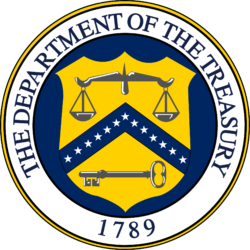Payroll
IRS Issues Guidance on Payroll Tax Deferral
The Treasury Department has issued its official guidance on the 2020 payroll tax relief that President Trump put into action on August 8 in his Presidential Memorandum.
Aug. 30, 2020

The Treasury Department has issued its official guidance on the 2020 payroll tax relief that President Trump put into action on August 8 in his Presidential Memorandum. According to IRS Notice 2020-65, payroll tax relief is available for employers and is applicable to wages paid from September 1, 2020, through December 31, 2020.
Employers are allowed to defer withholding, deposit, and payment of the employee’s portion of Social Security tax on wages that are less than $4,000 during a bi-weekly pay period. Each pay period is to be considered separately, and no deferral is allowed for any payment to an employee of taxable wages of $4,000 or more for a bi-weekly pay period. Technically the requirement to deposit employee Social Security tax does not occur until the tax is withheld; thus, by postponing the withholding of the employee Social Security tax, the deposit obligation is delayed.
The choice to defer withholding, deposit, and payment of the Social Security taxes is optional.
Note that this is a deferral of the payroll tax and not an exemption from payroll tax. The due date for deferred employee Social Security taxes is postponed until the tax period beginning on January 1, 2021, and ending on April 30, 2021. Deferred payroll taxes not paid during this period will be subject to interest and penalties.
Joe Bishop-Henchman, vice president of tax policy at the National Taxpayer Union Foundation posted an interpretation of this guidance on Twitter wherein he suggested that the Treasury Department is encouraging employers to forego withholding from September 1 through December 31, 2020, and then withhold double the normal amount from January 1 through April 30, 2021.
Bishop-Henchman also suggests that if an employee leaves his or her job prior to May 1, 2021, and there are uncollected Social Security taxes still owing, the employer has the right to collect a lump sum from the employee to make up the uncollected amount. In a continuation of this discussion on Twitter, James Valvo, chief policy counsel at Americans for Prosperity Foundation, warns that an employer who chose not to withhold Social Security taxes from an employee who leaves his employment before the end of 2020 would be “on the hook for the taxes [the employer] didn’t withhold.”
CPA Practice Advisor spoke with Pete Isberg, vice president of government affairs for payroll software company ADP, regarding recommended guidance to employers who might be considering implementation of this deferral program. “We’re working on systems and how this will be orchestrated,” said Isberg. “There are some questions about how to offer this to employees, how employees should elect whether they want this deferral or not. We know that it’s optional for employers, although it is pretty clear employees will have an opinion about this. It’s pretty hard for an employer to implement this deferral without an employee-by-employee conversation. Do we default people in? Do we default people out? This guidance applies to 100 million people! There’s a lot of work to be done really which wasn’t apparent looking at the IRS Notice.”
President Trump’s Executive Order includes a suggestion that the Secretary of Treasury “shall explore avenues, including legislation, to eliminate the obligation to pay the taxes deferred pursuant to the implementation of this memorandum.” Certain members of Congress, however, have balked at the idea. Last week, 143 House Democrats publicly denounced the deferral program in a letter to the President and demanded that President Trump reverse the executive action, so the likelihood of a forgiveness program coming out of Congress seems slim.
For employers who plan on implementing the payroll tax deferral program, here are some suggestions to make the process easier and to protect all involved parties:
- Make sure you inform employees that it is expected that deferred Social Security taxes will have to be paid back between January 1 and April 30, 2021.
- Have employees sign a contract agreeing to additional withholding up to twice the normal amount of Social Security taxes in the period from January 1 through April 30, 2021.
- Include in the employee contract the agreement that the employee will reimburse the employer for any deferred payroll taxes should the employee leave the company prior to such a time when all deferred payroll taxes have been repaid.
- Have a plan in place to account for repayment of deferred payroll taxes should the affected employee be earning less in 2021 than he or she earned in 2020.
- Make sure your payroll team or payroll provider understands its obligations for adjusting paychecks to reflect the deferral and then, next year, adjusting paychecks to repay the deferred amount.
